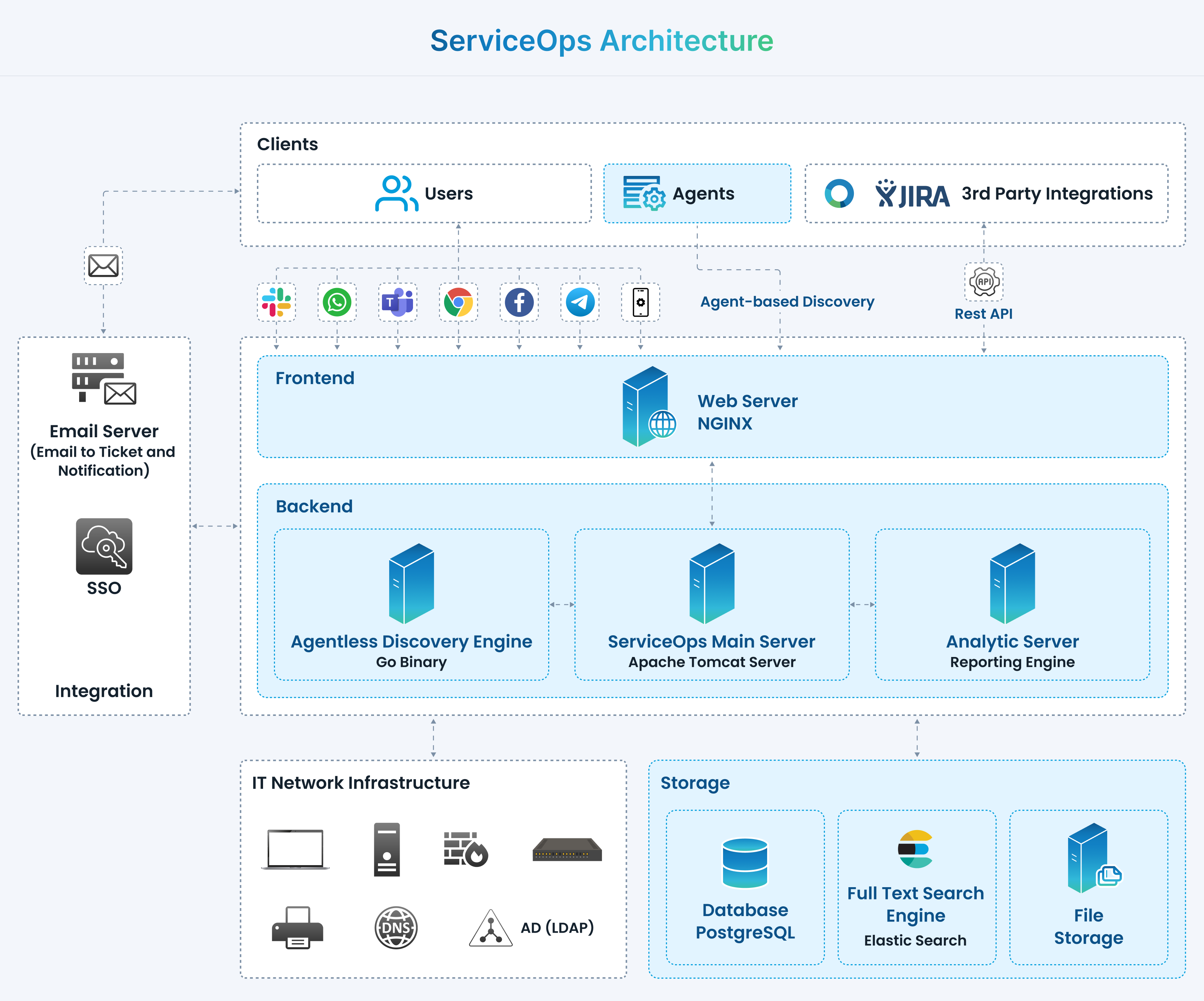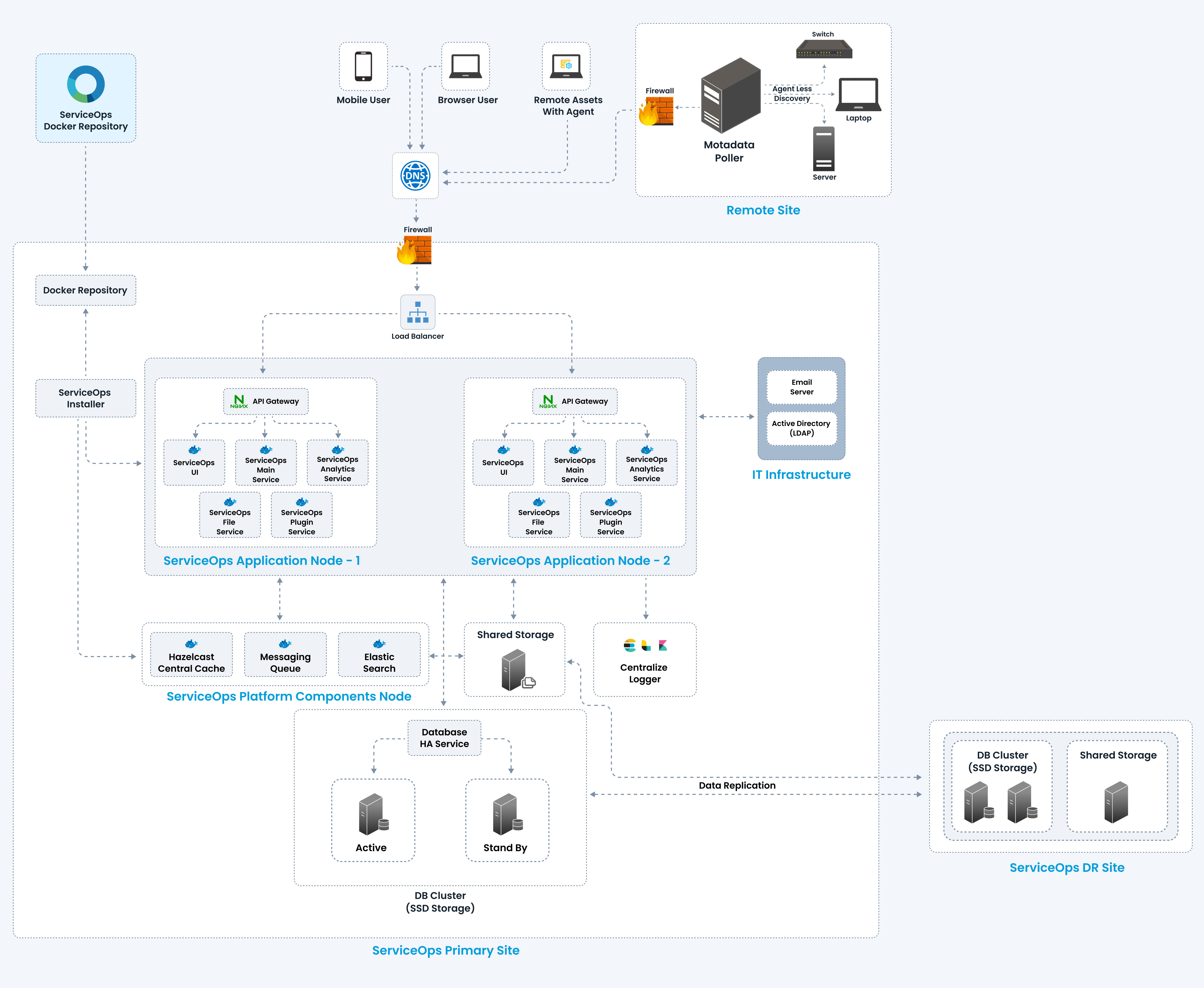Introduction
Motadata ServiceOps is an ITIL compliant ITSM tool that uses AI/ML to optimize and streamline the service delivery across the various business processes. It automates the support workflows and discards the manual complexities. Apart from request tracking and management, it also provides Problem, Change, Release, Assets, Patches, Packages, Projects, Knowledge, Reports, and Task management functionalities. With all these services in a single ServiceOps instance, an organization does not need to buy multiple tools for different services, making it an All-in-One solution. Moreover, with a modern and user-friendly interface, the IT team can work effectively and streamline the IT service delivery. Thus, the technicians and administrators can resolve the queries or requirements of the end users in no time.
This guide walks you through the initial steps of installing the Motadata Service Desk. It provides the procedure about how to install the various servers, and configure high availability. Also, you can find the information to upgrade ServiceOps. For more details, see the Upgrade Guide section.
Before moving ahead, let’s understand the architecture of ServiceOps.
ServiceOps Architecture

The architecture contains the following layers:
- Product Platform: This layer contains the ServiceOps Main Sever, Agentless Discovery Engine, Analytic Server, Database, and the Full Text Search Engine. It displays the communication of all the components with the Main Server.
- Front-End: This layer contains the Web Server NGINX from which the end users and 3rd party applications can access the ServiceOps via Web Browser or Rest API.
- Assets: This layer contains the Agents, IT Network infrastructure, Mail Servers, Active Directory, and Domain Name Server.
- 3rd Party Integrations and End Users: This layer contains the applications which can be integrated with ServiceOps.
ServiceOps Architecture - Containerized

Based on the architecture, make your environment ready for installation.
Now, let’s start installing the required servers step-by-step.
It contains the following sections: